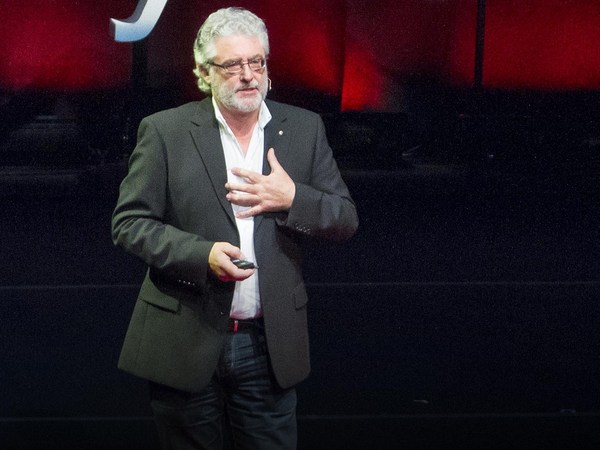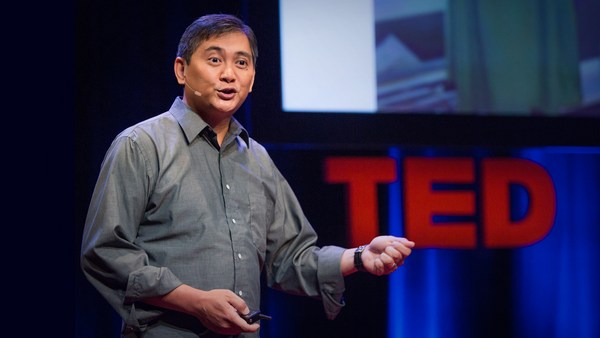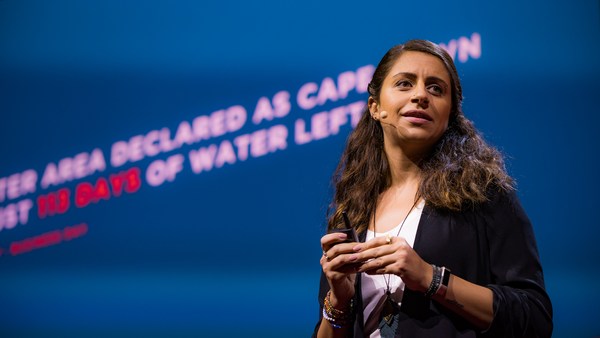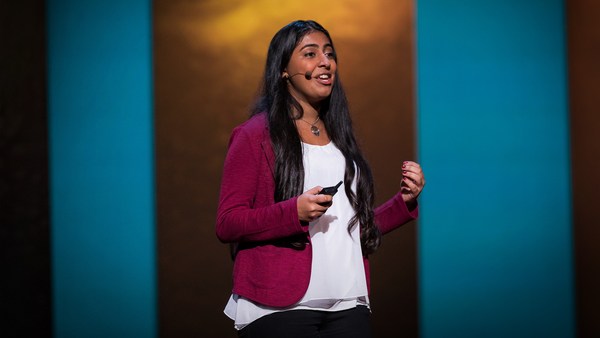It is very fashionable and proper to speak about food in all its forms, all its colors, aromas and tastes. But after the food goes through the digestive system, when it is thrown out as crap, it is no longer fashionable to speak about it. It is rather revolting.
I'm a guy who has graduated from bullshit to full-shit. (Laughter) My organization, Gram Vikas, which means "village development organization," was working in the area of renewable energy. On the most part, we were producing biogas, biogas for rural kitchens. We produce biogas in India by using animal manure, which usually, in India, is called cow dung. But as the gender-sensitive person that I am, I would like to call it bullshit. But realizing later on how important were sanitation and the disposal of crap in a proper way, we went into the arena of sanitation. Eighty percent of all diseases in India and most developing countries are because of poor quality water. And when we look at the reason for poor quality water, you find that it is our abysmal attitude to the disposal of human waste.
Human waste, in its rawest form, finds its way back to drinking water, bathing water, washing water, irrigation water, whatever water you see. And this is the cause for 80 percent of the diseases in rural areas. In India, it is unfortunately only the women who carry water. So for all domestic needs, women have to carry water. So that is a pitiable state of affairs.
Open defecation is rampant. Seventy percent of India defecates in the open. They sit there out in the open, with the wind on their sails, hiding their faces, exposing their bases, and sitting there in pristine glory -- 70 percent of India. And if you look at the world total, 60 percent of all the crap that is thrown into the open is by Indians. A fantastic distinction. I don't know if we Indians can be proud of such a distinction. (Laughter)
So we, together with a lot of villages, we began to talk about how to really address this situation of sanitation. And we came together and formed a project called MANTRA. MANTRA stands for Movement and Action Network for Transformation of Rural Areas. So we are speaking about transformation, transformation in rural areas. Villages that agree to implement this project, they organize a legal society where the general body consists of all members who elect a group of men and women who implement the project and, later on, who look after the operation and maintenance. They decide to build a toilet and a shower room. And from a protected water source, water will be brought to an elevated water reservoir and piped to all households through three taps: one in the toilet, one in the shower, one in the kitchen, 24 hours a day. The pity is that our cities, like New Delhi and Bombay, do not have a 24-hour water supply. But in these villages, we want to have it.
There is a distinct difference in the quality. Well in India, we have a theory, which is very much accepted by the government bureaucracy and all those who matter, that poor people deserve poor solutions and absolutely poor people deserve pathetic solutions. This, combined with a Nobel Prize-worthy theory that the cheapest is the most economic, is the heady cocktail that the poor are forced to drink. We are fighting against this. We feel that the poor have been humiliated for centuries. And even in sanitation, they should not be humiliated. Sanitation is more about dignity than about human disposal of waste. And so you build these toilets and very often, we have to hear that the toilets are better than their houses. And you can see that in front are the attached houses and the others are the toilets.
So these people, without a single exception of a family in a village, decide to build a toilet, a bathing room. And for that, they come together, collect all the local materials -- local materials like rubble, sand, aggregates, usually a government subsidy is available to meet at least part of the cost of external materials like cement, steel, toilet commode. And they build a toilet and a bathing room. Also, all the unskilled laborers, that is daily wage earners, mostly landless, are given an opportunity to be trained as masons and plumbers. So while these people are being trained, others are collecting the materials. And when both are ready, they build a toilet, a shower room, and of course also a water tower, an elevated water reservoir. We use a system of two leach pits to treat the waste. From the toilet, the muck comes into the first leach pit. And when it is full, it is blocked and it can go to the next. But we discovered that if you plant banana trees, papaya trees on the periphery of these leach pits, they grow very well because they suck up all the nutrients and you get very tasty bananas, papayas. If any of you come to my place, I would be happy to share these bananas and papayas with you. So there you can see the completed toilets, the water towers.
This is in a village where most of the people are even illiterate. It is always a 24-hour water supply because water gets polluted very often when you store it -- a child dips his or her hand into it, something falls into it. So no water is stored. It's always on tap. This is how an elevated water reservoir is constructed. And that is the end product. Because it has to go high, and there is some space available, two or three rooms are made under the water tower, which are used by the village for different committee meetings.
We have had clear evidence of the great impact of this program. Before we started, there were, as usual, more than 80 percent of people suffering from waterborne diseases. But after this, we have empirical evidence that 82 percent, on average, among all these villages -- 1,200 villages have completed it -- waterborne diseases have come down 82 percent. (Applause) Women usually used to spend, especially in the summer months, about six to seven hours a day carrying water. And when they went to carry water, because, as I said earlier, it's only women who carry water, they used to take their little children, girl children, also to carry water, or else to be back at home to look after the siblings. So there were less than nine percent of girl children attending school, even if there was a school. And boys, about 30 percent. But girls, it has gone to about 90 percent and boys, almost to 100 percent. (Applause) The most vulnerable section in a village are the landless laborers who are the daily wage-earners. Because they have gone through this training to be masons and plumbers and bar benders, now their ability to earn has increased 300 to 400 percent.
So this is a democracy in action because there is a general body, a governing board, the committee. People are questioning, people are governing themselves, people are learning to manage their own affairs, they are taking their own futures into their hands. And that is democracy at the grassroots level in action. More than 1,200 villages have so far done this. It benefits over 400,000 people and it's still going on. And I hope it continues to move ahead.
For India and such developing countries, armies and armaments, software companies and spaceships may not be as important as taps and toilets.
Thank you. Thank you very much.
(Applause) Thank you.





